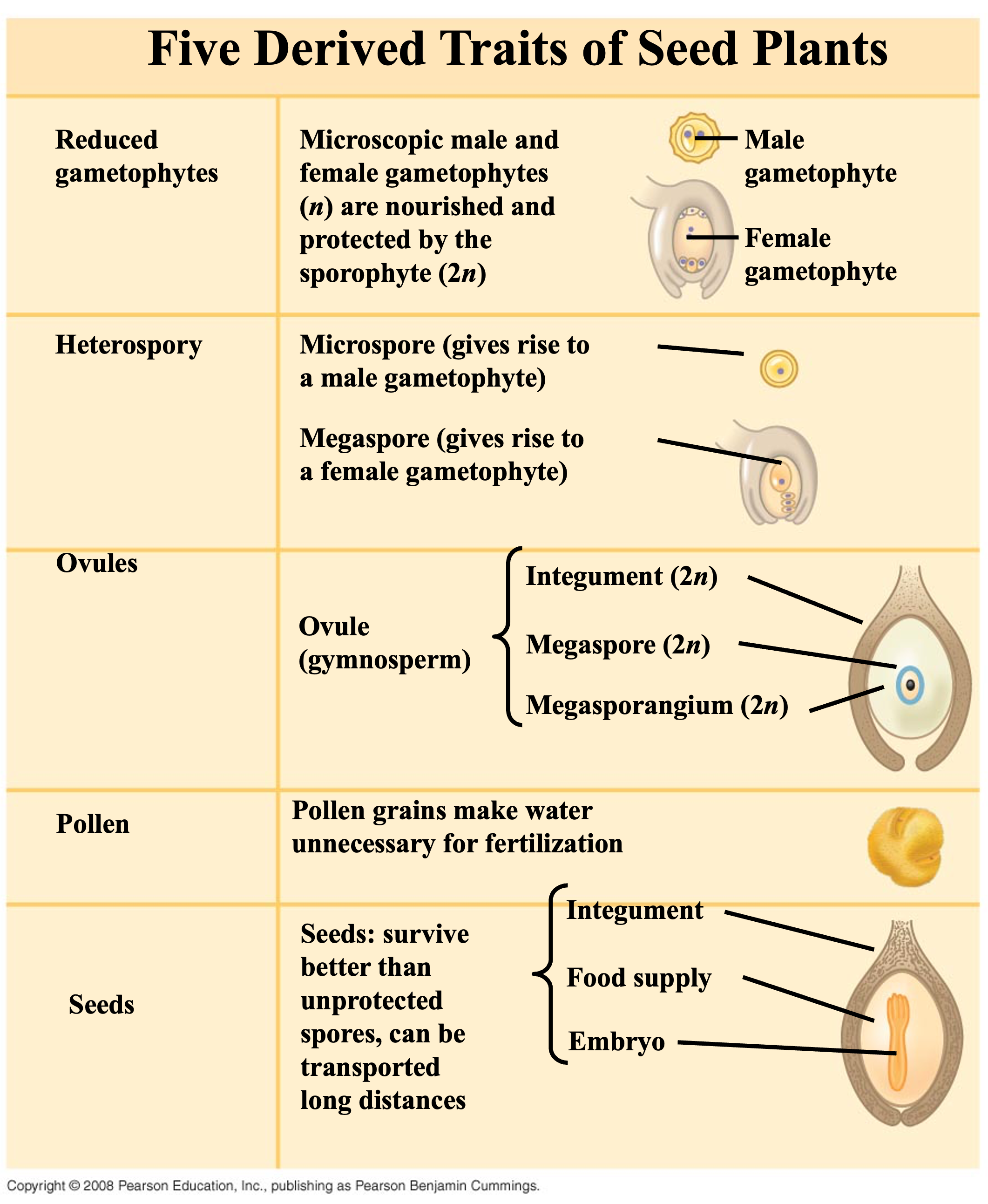Biodiversity Quiz 4
1/30
There's no tags or description
Looks like no tags are added yet.
Name | Mastery | Learn | Test | Matching | Spaced |
|---|
No study sessions yet.
31 Terms
Gymnosperms
naked seeds, seed does NOT develop in enclosed structure
Angiophyta (Angiosperms / flowers)
seed vessel, seed develops inside carpel (protective structure), over 250,000 known species, eg. oak trees, thrive environments from desert to freshwater to rain forests, defining adaptation: flowers, vascular tissues have both tracheids and vessel elements, have ovules, supply food that supports all organisms.
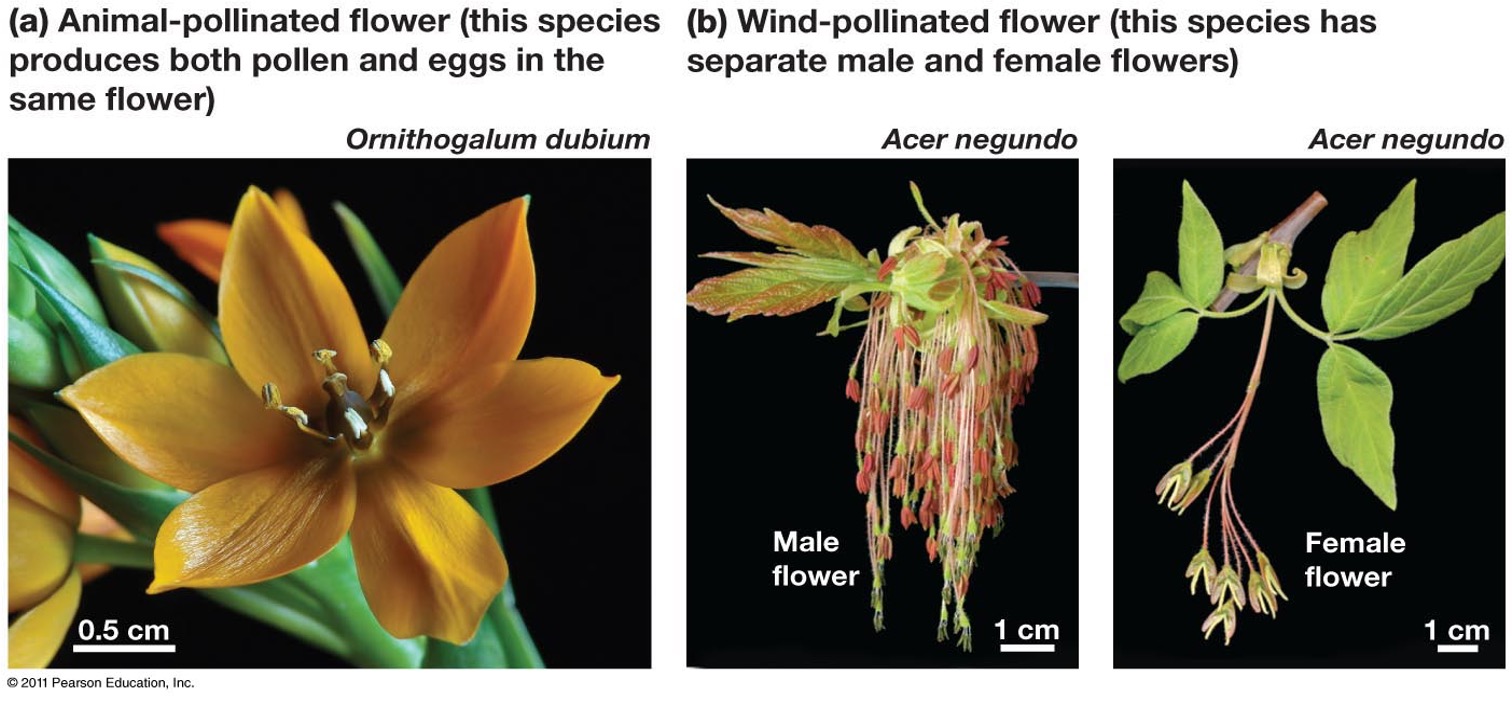
Diversification of Flower
appeared 150 mya

Flower
reproductive organ that allowed mass diversification of angiosperms, contain stamens and carpels, heterospory is similar to gymnosperms except for double fertilization,
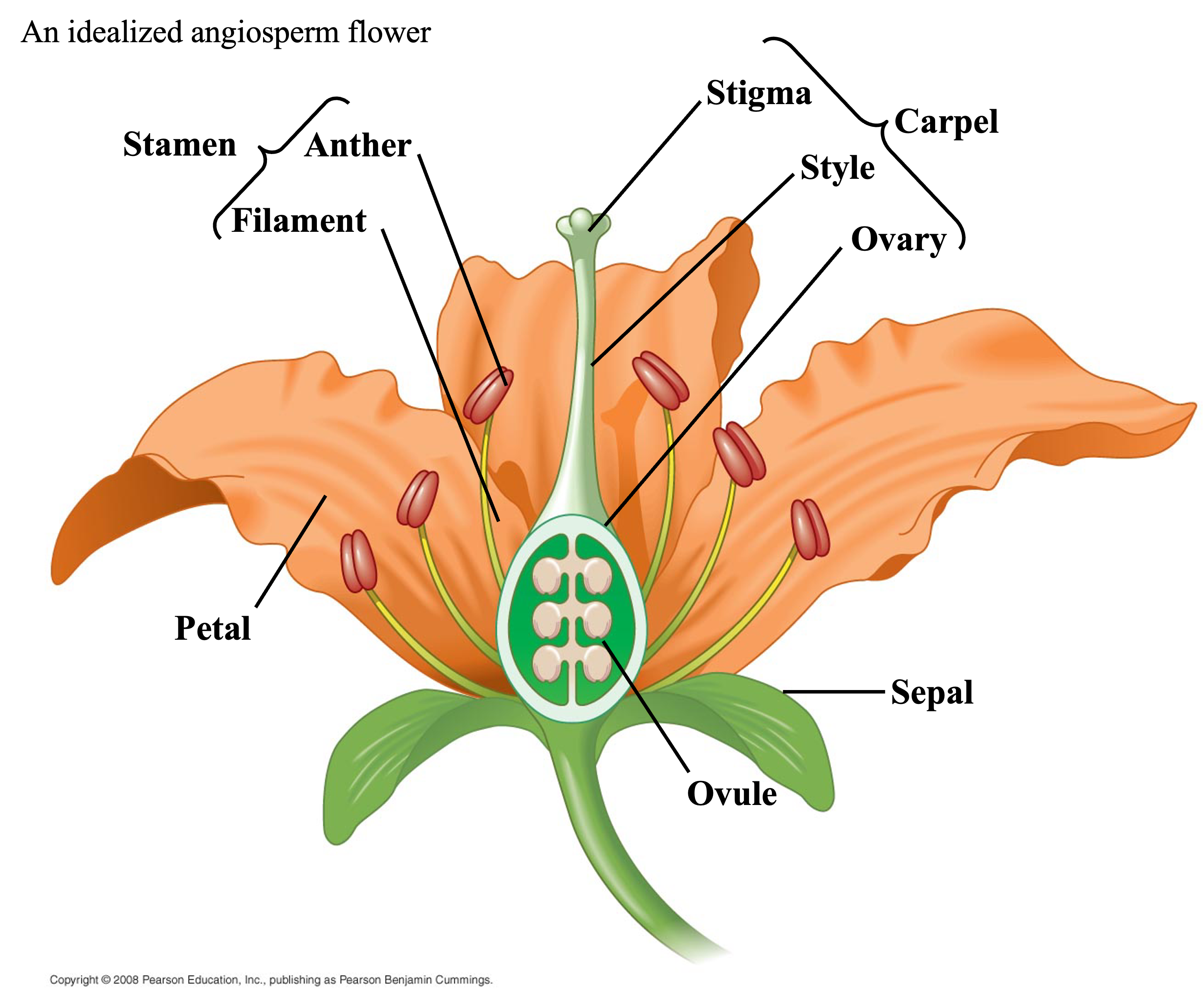
Anther
microsporangia
ovary
macrosporangia and eggs
Double Fertilization
one sperm cells fuses with egg to form zygote, second sperm fuses with 2 nuclei in female gametophyte (made of 7 cells, one of her cells have 2 nuclei) to form a tripoloid (3n) endosperm
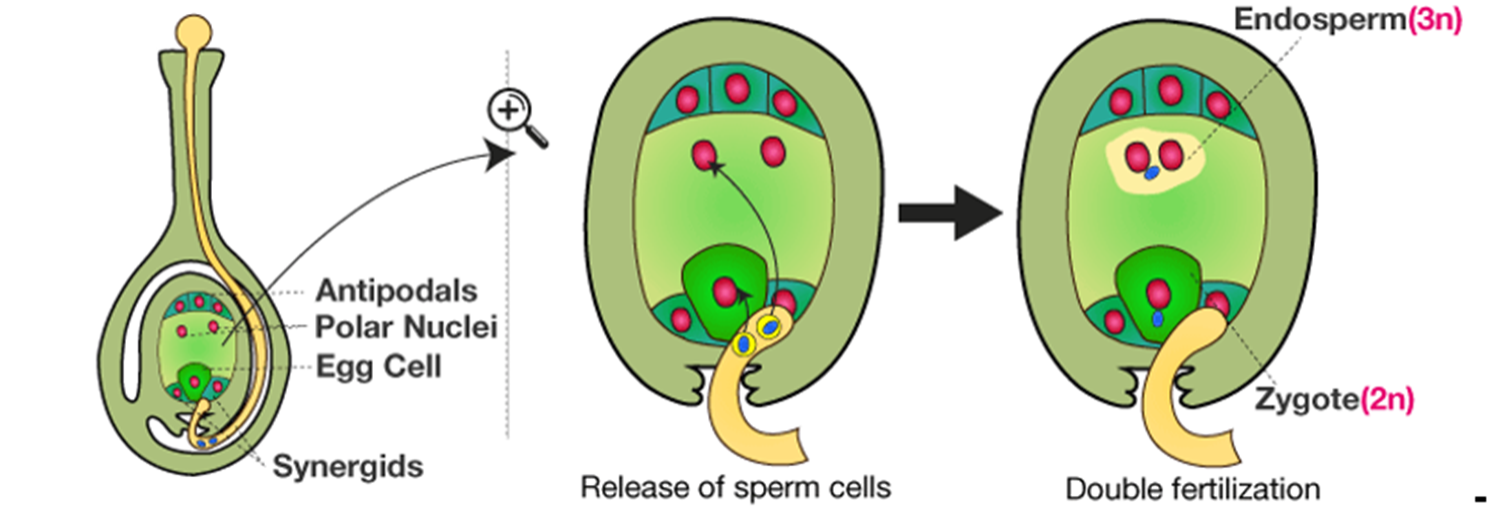
endosperm
nutritive tissue result of double fertilization
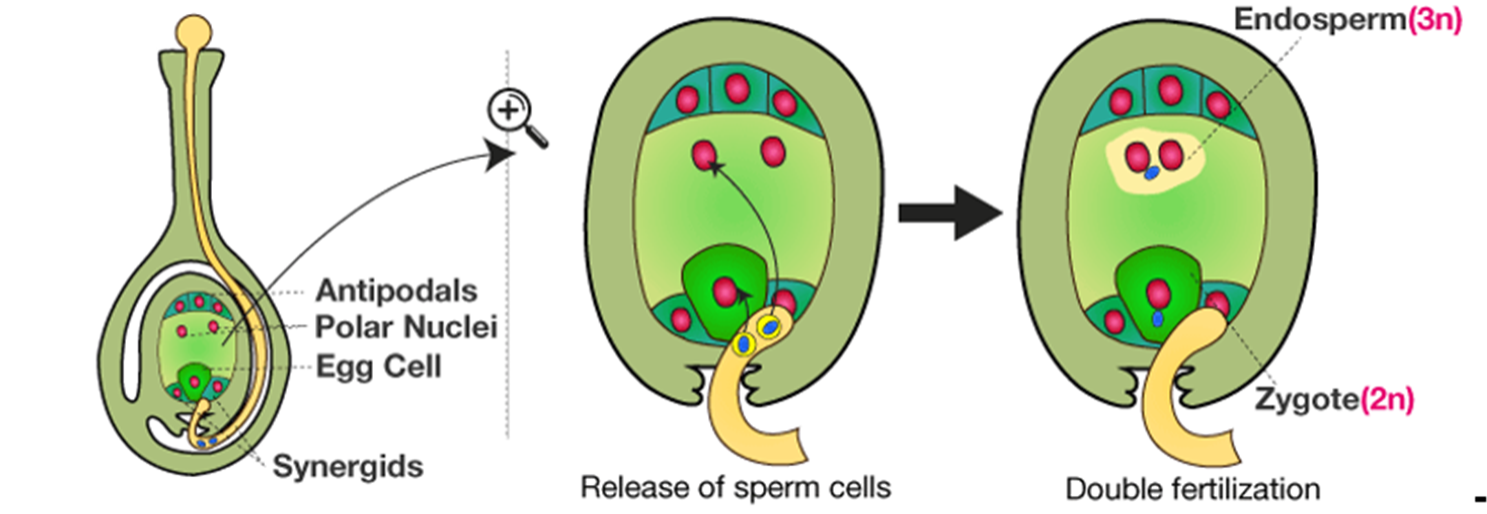
Angiosperm Life Cycle
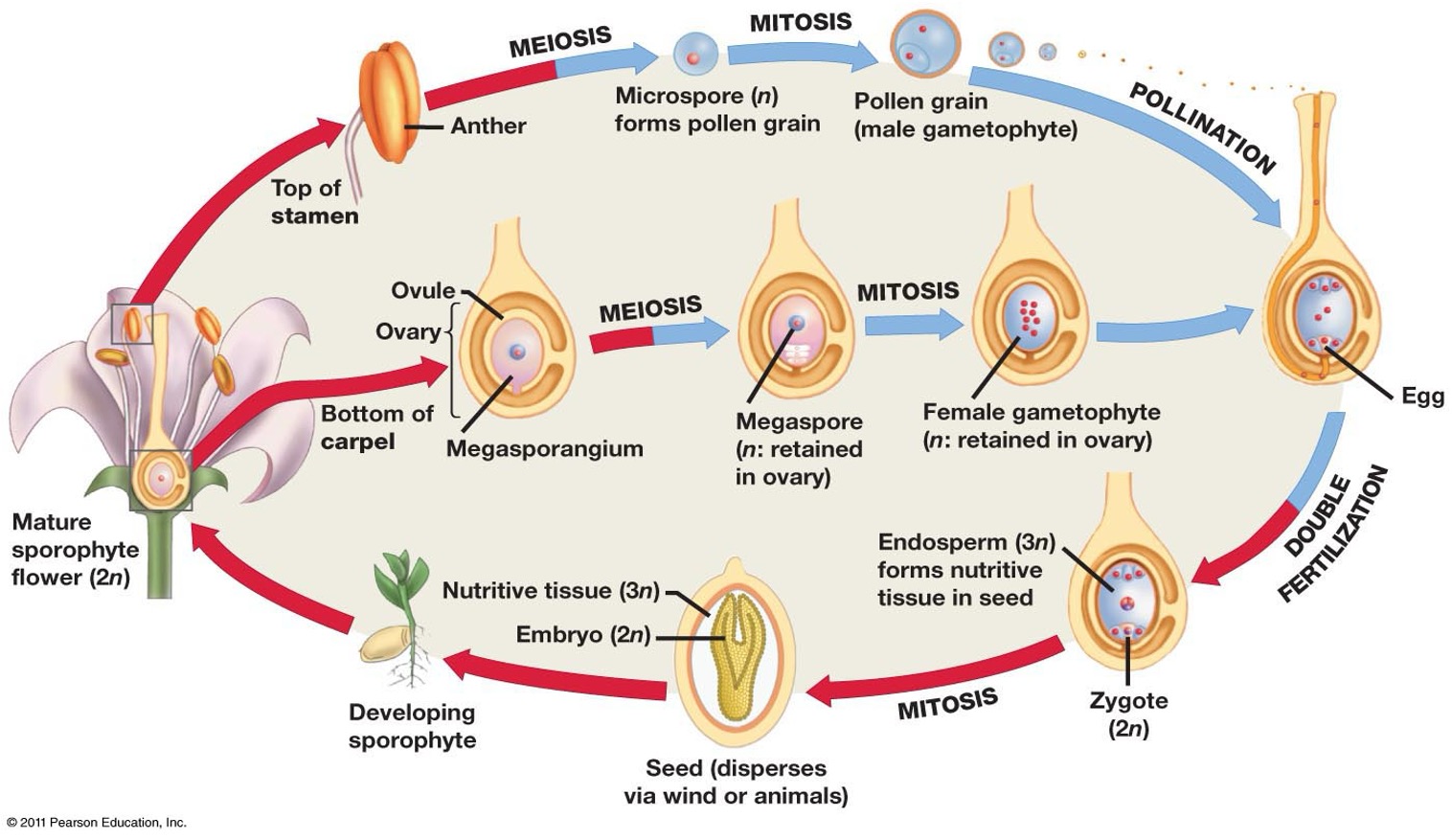
Pollination
stamens and carpels enclosed with sepals and petals, 4 structures diversified to produce diff sizes, shapes, colors, and smells, increases probability for pollination
pollination
transfer of pollen from one flower’s stamen to another’s carpel
Directed Pollination Hypothesis
natural selection favors flower colors, shapes, and scents that are successful in attracting particular types of pollinators, provide pollinators with food, mutually beneficial relationship
Evidence Supporting DPH
scent: carrion produces rotting flesh smell that attracts carrion flies
Shape: humming-bird pollinated flowers have adapted a long flower petal shaped for the birds'' beak shape
Color: adapt color best seen by pollinator
Expirement: altering length of spur in different orchids
Fruits
structure that is derived from the ovary and encloses 1+ seeds, mature ovaries that ripen, when pollinated: ovules emit hormones, ovary of fruit develops into pericarp
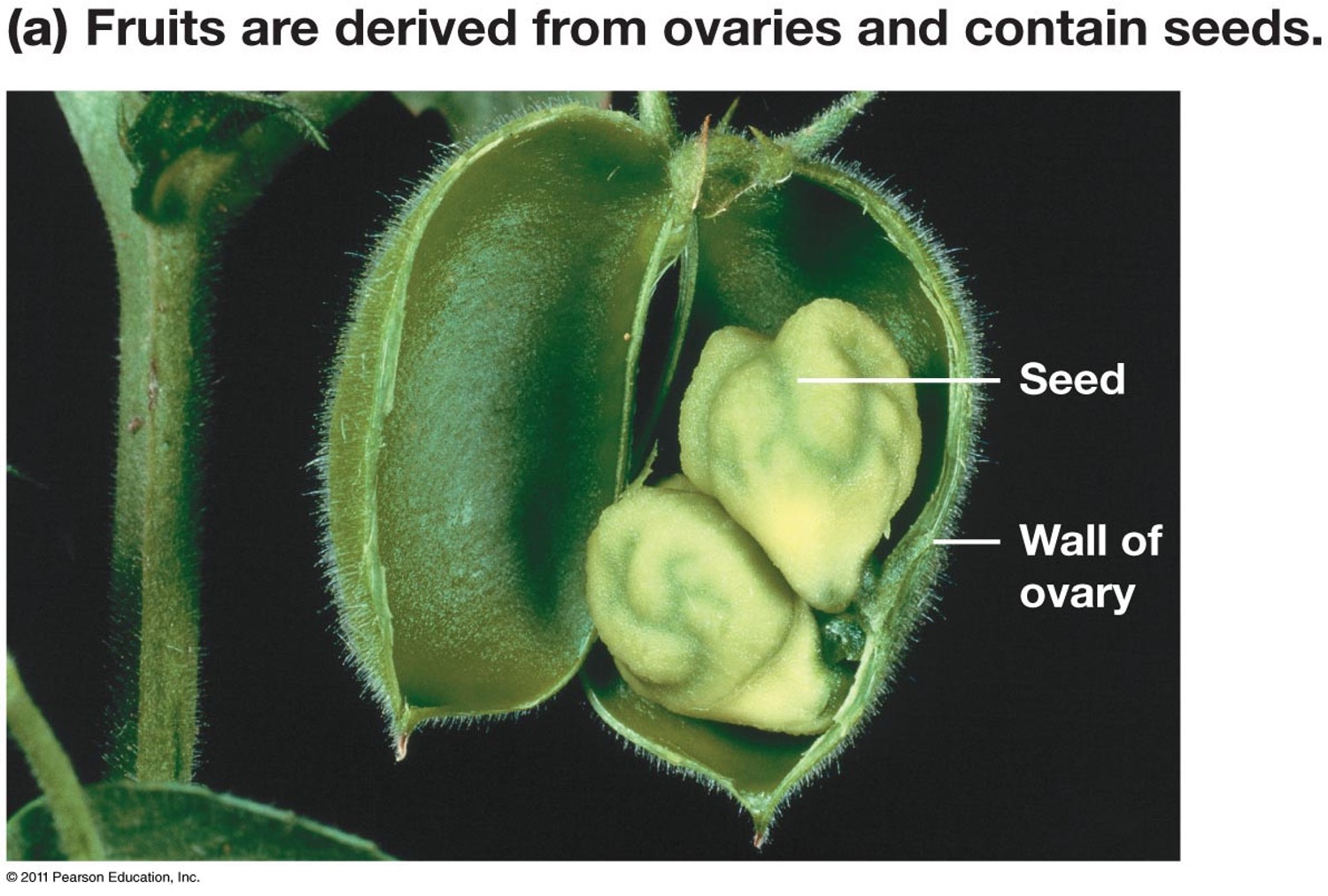
Fruit Development
fertilization initiates fruit development but also seed and embryo development, 3 basic fruits: Simple, Aggregate, and multiple
Simple Fruits
eg: apricot
develop from single flower that contains 1 carpels that are fused together
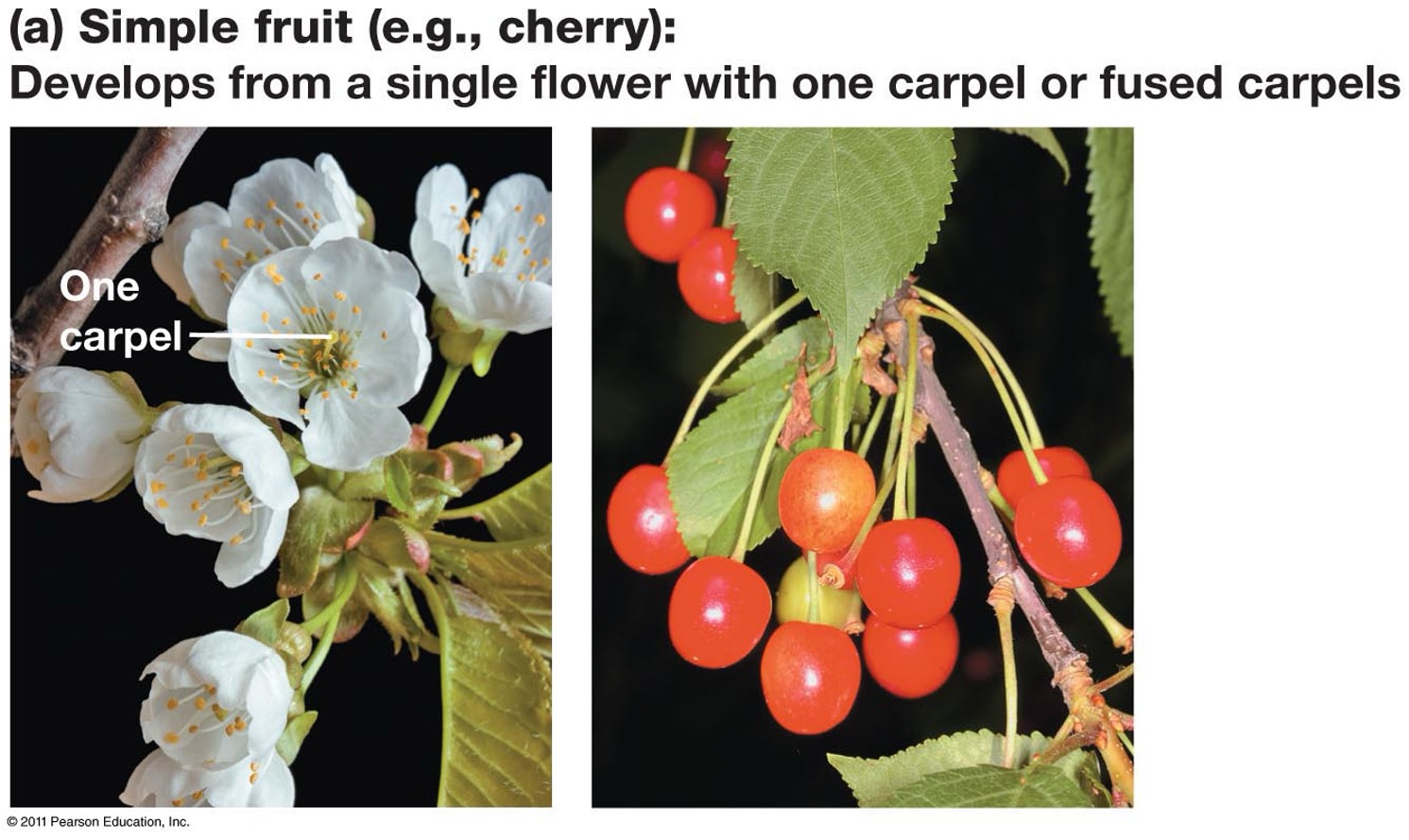
Agregate Fruits
eg: raspberry
develop from single flower but contain many separate carpels
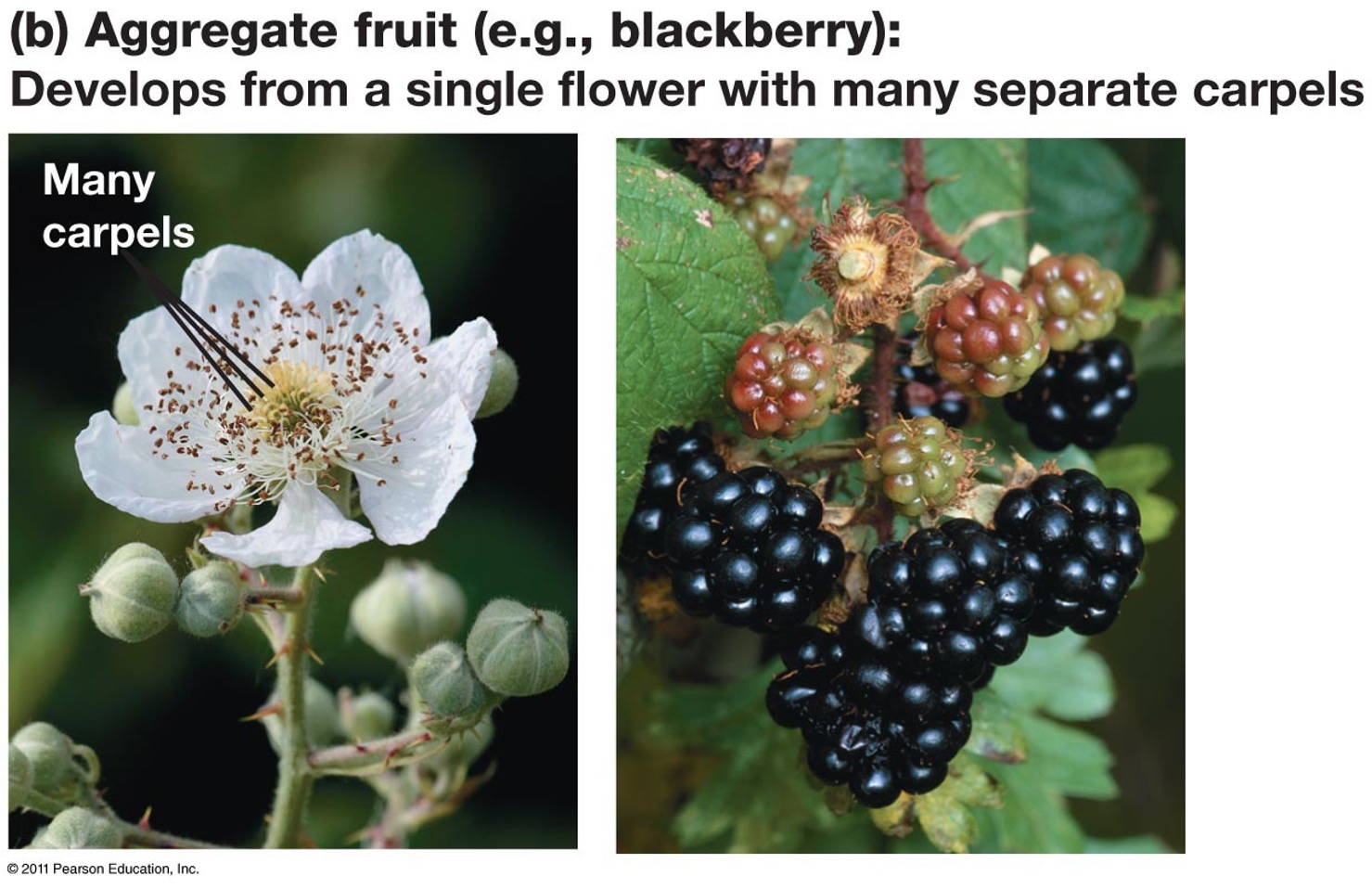
Multiple Fruits
eg: pineapple
develop from many flowers thus many carpels

Seed Dispersal
wind, water, or animals.
Other method: Ballistic, Water, Animal Feet/Legs
Ballistic
Shoot seeds via water system
Seed Germination
only germinates in right conditions: right aount of light, water, temp, and O2
3 ways to germinate: Scarification, Stratification, Double Dormancy
Scarification
go through digestive track of animal
Stratification
need to be kept at temp less than 45 degrees
Double Dormancy
rely on both scarification and stratification
Angiosperm Radiation
3 key adaptation: Vessel Elements, Flowers, and Fruits
Divided into 2 major groups based on cotyledons (first leaves): Monocotyledons and Dicotyledons
Monocotyledons (Monocots)
monophyletic, have 1 cotyledon, scattered vascular tissue throughout stem, parallel veins, petals in mult. of 3
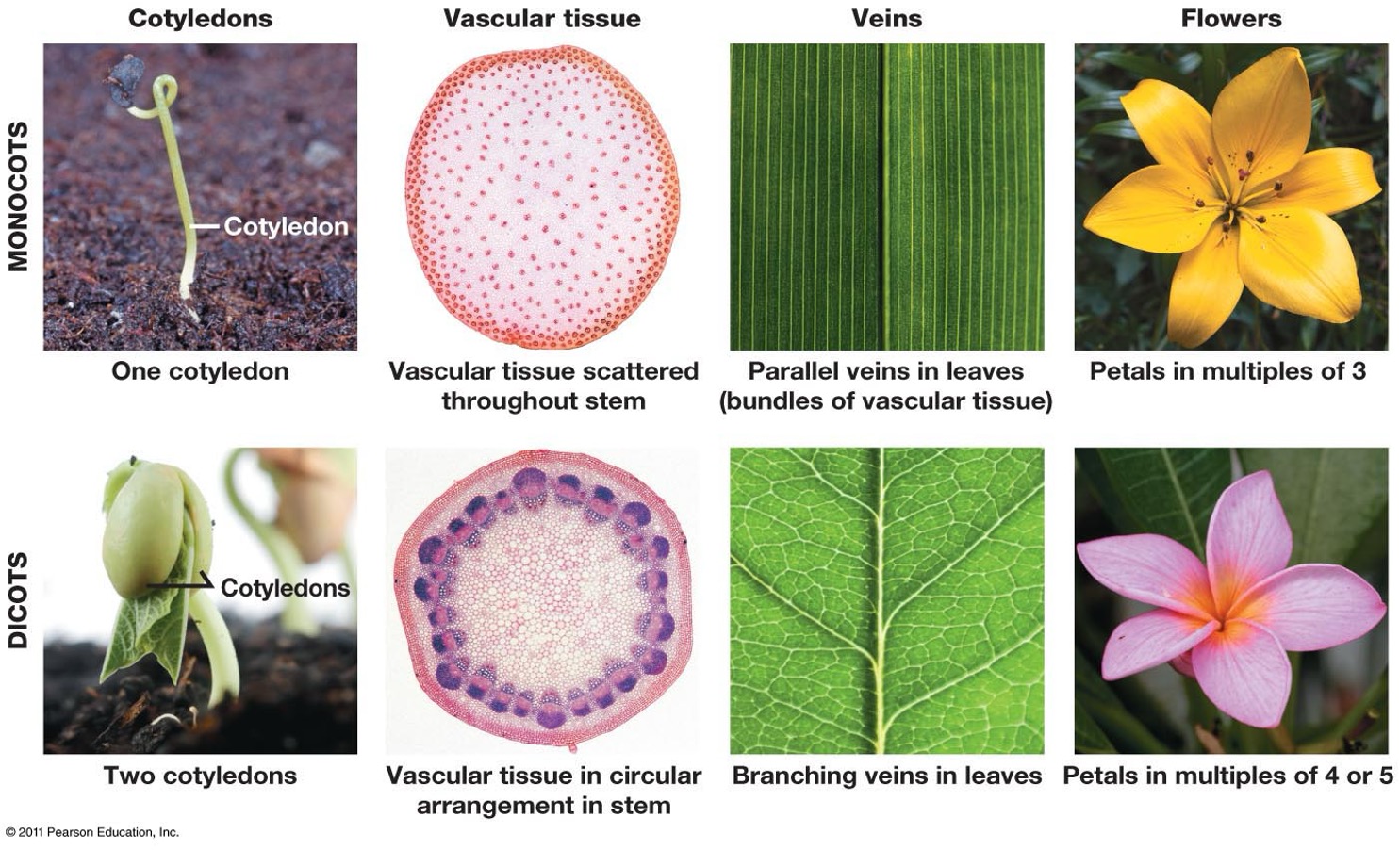
Dicotyledons (Dicots)
paraphyletic
Also called Eudicots
Eudicots
subset of dicots that represent monophyletic group, 2 cotyledons, vascular tissue arranged in circle in stems, branching veins, petals in mult. of 4-5
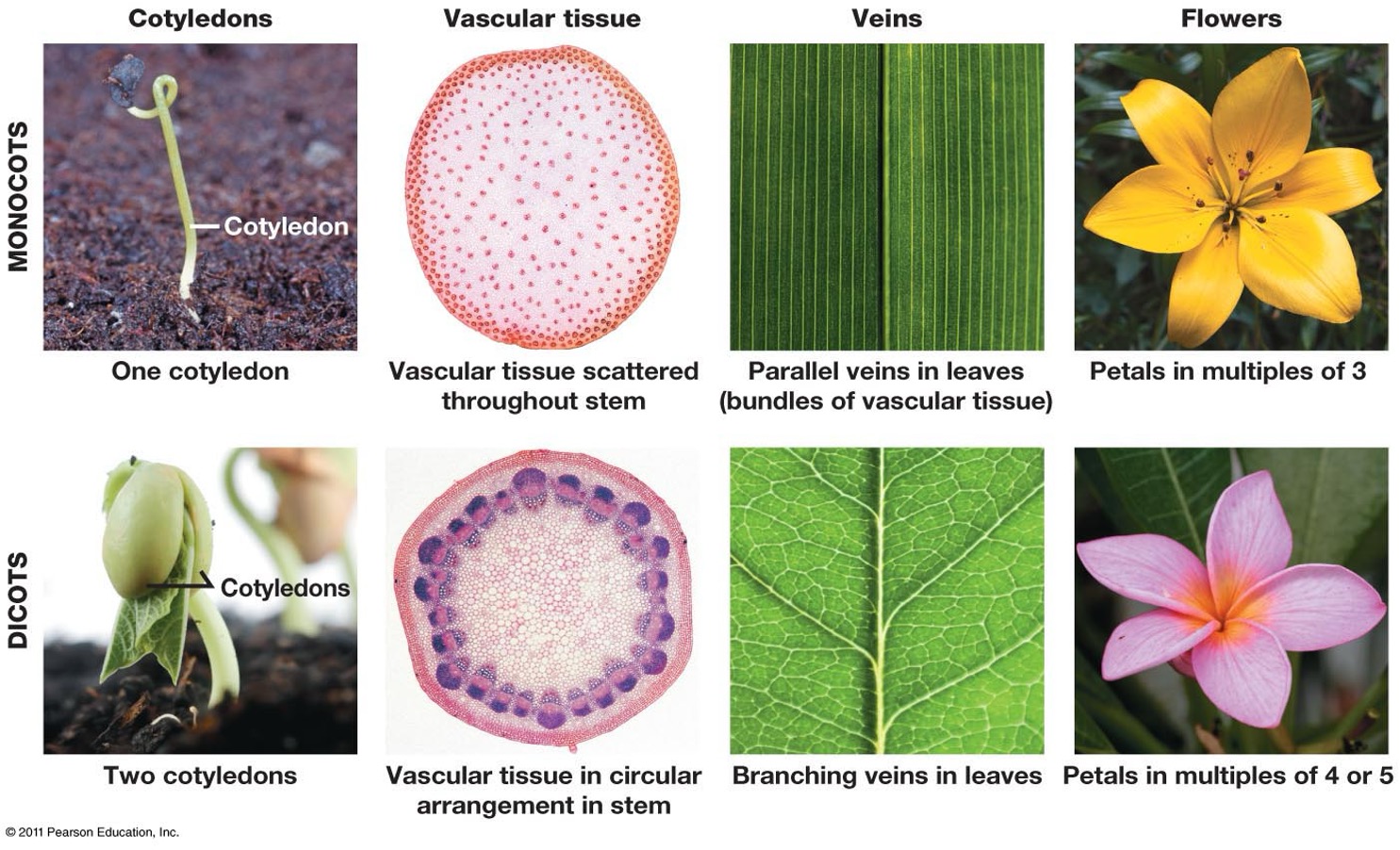
Angiosperm Phylogeny
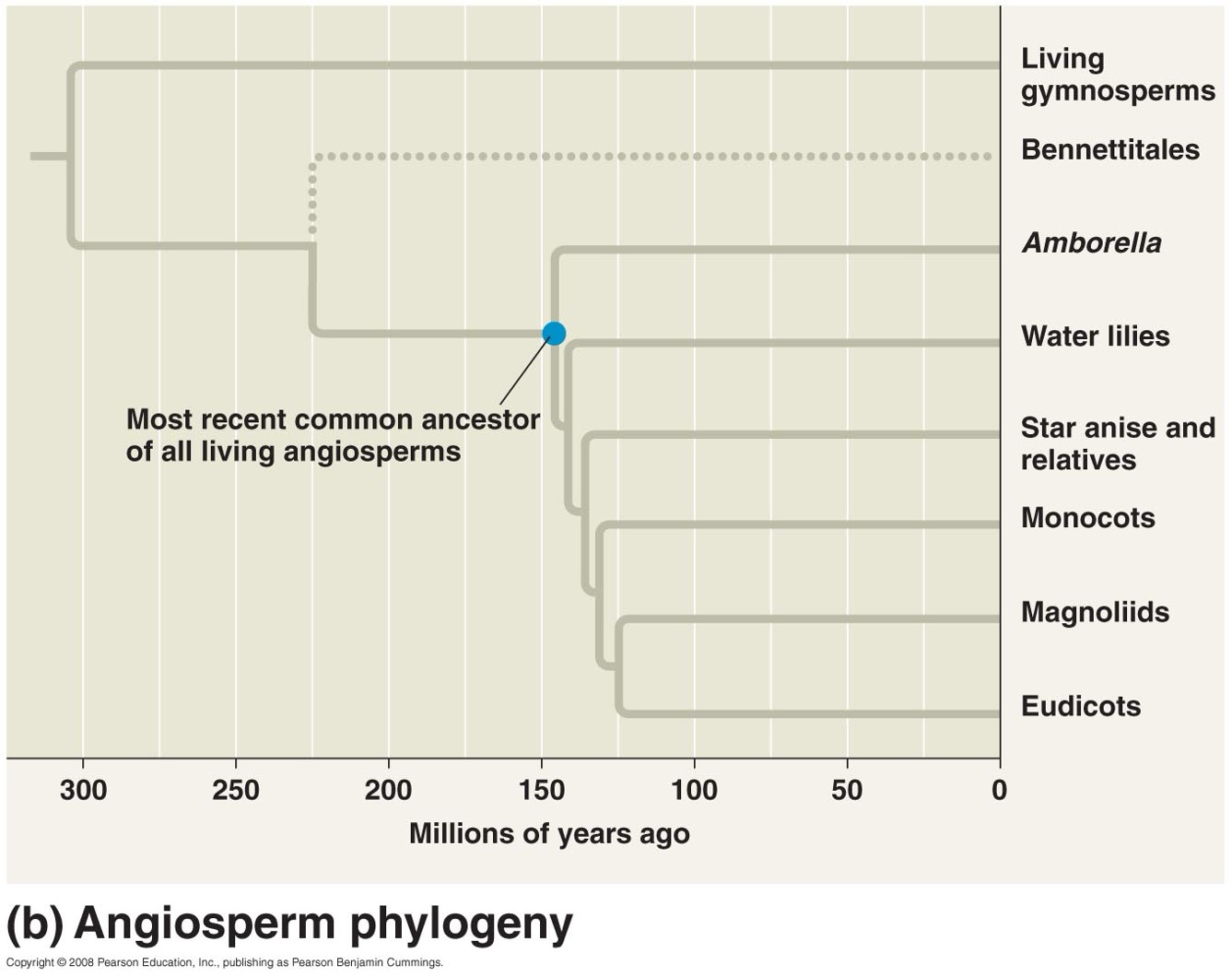
Monocot VS Dicot Characteristics
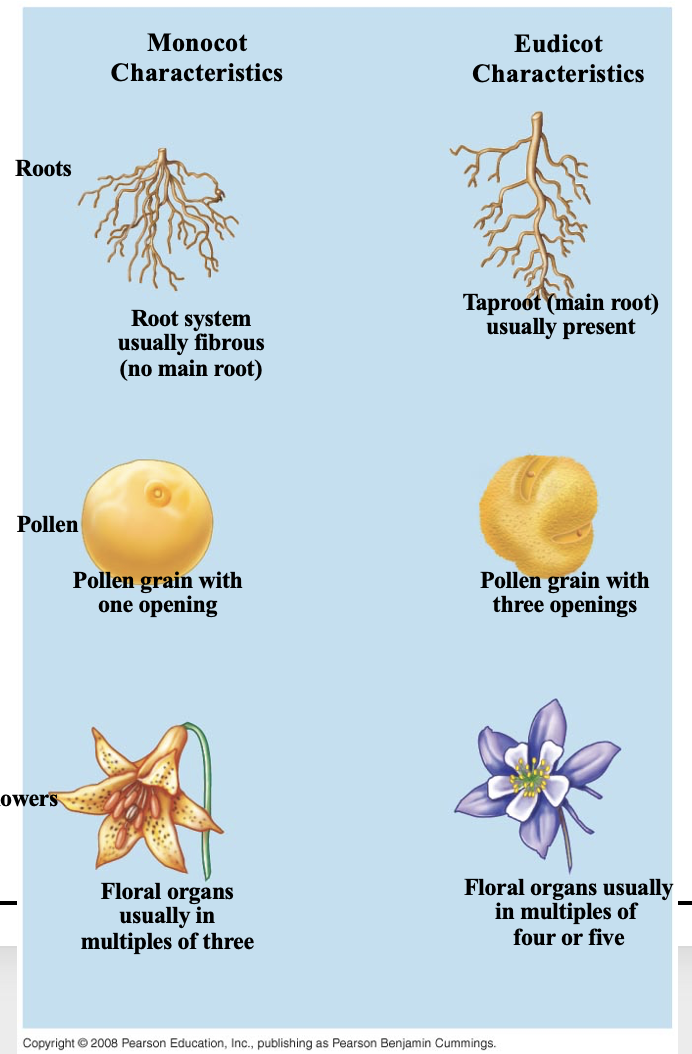
5 Derived Traits of Seed Plants
